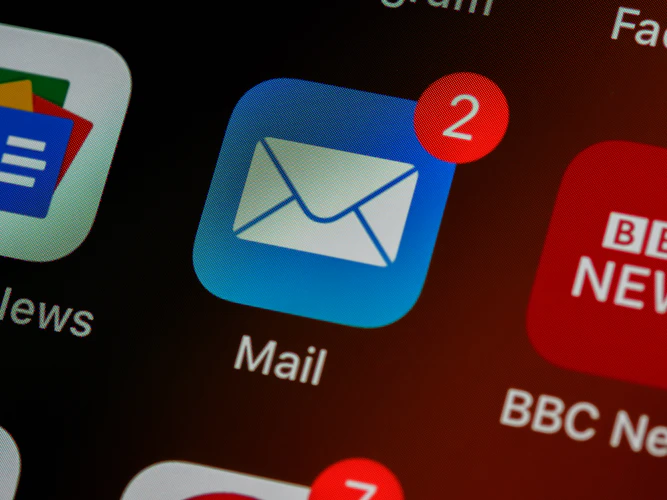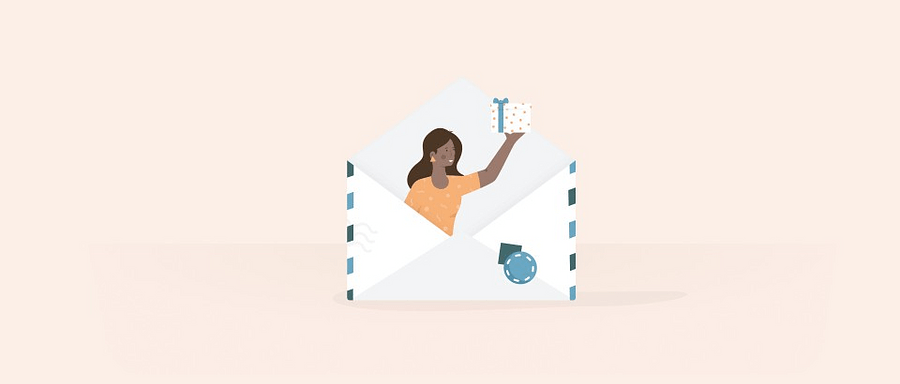A lot of businesses often overlook email marketing because, well, who uses email when you can go on Instagram, Facebook, or Twitter? However, that may not be true, and by putting effort into eCommerce email marketing, you can gain such a big boost in revenue that your competitors who focus on SMM only will ache to find out what you do. In fact, marketers who use segmented email campaigns have noticed a 760% increase in revenue.
What is eCommerce Email Marketing?
In very simple terms, eCommerce email marketing is the art of generating sales for your eCommerce store using emails. Ranging from sending simple special offer emails to managing multiple complex campaigns, eCommerce email marketing is a perfect tool for conversion and retention.
While social media drives traffic, email turns that traffic into full customers who buy once and keep coming back. Email marketing is more personal since it does not address everyone, unlike other marketing channels. It is extremely action-oriented. We are used to doing something with email, and we project that same behavior within our personal or working emails onto advertising newsletters. So, we have this urge to reply, forward, or start buying!
eCommerce email marketing also values analytics—it is easy to get data on who opened an email and which buttons they clicked.
So, email marketing has so many benefits to offer that you might want to know immediately how to start. The art of eCommerce email marketing requires some research and knowledge in advance.
In this article, we are going to give sellers this knowledge by dividing it into three blocks:
How to get newsletter subscribers
How to email customer on every step of their customer journey
How the right eCommerce marketing can make them forget about the unsubscribe button
After reading, you will be able to jump straight into email marketing, gain your first newsletter subscribers, and create the first campaign.
Table of Contents
How to Get Newsletter Subscribers
Before tailoring beautiful and engaging emails, you have to find someone who will read and enjoy them. Moreover, the process of growing an email list is the first step in creating long-term relationships with your customers. It is the point where they discover your shop, and either you keep reminding them through newsletters they subscribed to, or they simply forget about your eCommerce business after a couple of minutes. Source: Unsplash.com Growing your email list has a few key subtasks that we will list and break down for better understanding so you can use this great tool effectively in your eCommerce marketing.
Source: Unsplash.com Growing your email list has a few key subtasks that we will list and break down for better understanding so you can use this great tool effectively in your eCommerce marketing.
Make Customers See That You Have a Newsletter
It is a common mistake when sellers forget to show off their newsletter. When you work with a business for a long time, news stops being news for you, but it still is for everyone else, especially new customers. Do not hide the sign-up form away; try these places instead:
In the footer (the most common place for eCommerce stores)
As a pop-up form when a customer leaves
As an option when a customer finishes shopping
Next to your social media links
Pro tip: Make the form as simple and short as possible. Otherwise, people will choose to leave instead of spending time answering multiple questions. Go for a name and an email.
Make Customers Want To Subscribe
We all look for benefits. We do not do things until we know there is a reward waiting for us. So, you have to attract them and give them some kind of reward for their time. You can suggest:
A coupon for subscription
Special offers and sales for email newsletter subscribers only
Expert insights and interviews in a newsletter that can help customers solve their problems
The chance to become part of a larger community
This does not take much effort on your side but will definitely grow your address book. With an extensive email list, you can enjoy all the benefits of email marketing and more.
What to Send to Email Customers On Every Step of Their Customer Journey
You would not force a beginner student to take an advanced course. You would not say “I love you” on a first date or wear sweatpants to a job interview.
“As with everything in the world, eCommerce marketing is about proper timing and proper content,” says the marketing department head at Ivory Research, and we cannot agree more. On every step of the customer journey, a client should receive a suitable email. Let’s take a closer look at each stage.
Stage 1: Awareness
This is when people realize they have a problem and start looking for its solution. They are just beginning their research and want to compare options. Your main task here is to make them discover your brand and leave them with a positive impression.
Send them a welcome email. Welcome emails have one of the highest open rates (82%). It has to be well-tailored because it is when a customer decides whether to unsubscribe or stay for more. It should look good, feel personal, and ideally include a promo code or coupon.
At this stage, create a connection with your brand. Share your values, history, and some interesting or fun facts. You can also ask for their opinion or include a question that sparks their interest, helping you learn more about their preferences.
Stage 2: Consideration
Here, customers are evaluating their options. They will take a closer look at your business and decide what fits them best.
Use customer reviews to strengthen your credibility. People trust the opinions of others more than advertisements. Use cloud eCommerce solution to manage and store this information for future use.
Videos, case studies, and photos of happy customers work best here. Show that you are the best choice.
Stage 3: Decision
Here, customers have chosen your brand but might need a final push. You can offer:
A trial period or samples
A discount
Free shipping
Free returns if they are not satisfied
Sometimes, customers add items to their cart but abandon them at checkout. This is where a cart abandonment email helps. Offer a discount or free return to make them more confident about their purchase.
Afterword
A purchase is not where the journey ends. A customer who buys from you once is more likely to buy again. They already trust your brand. Many businesses focus on retention, and rightly so, because it is cheaper than acquiring new customers.
That is why many businesses today invest in eCommerce Conversion Rate Optimization (CRO). Effective CRO strategies can significantly improve the likelihood of repeat purchases, leading to greater customer satisfaction and loyalty.
Loyal customers are also more likely to recommend your brand to friends and family, and word-of-mouth advertising is the most powerful form of marketing that costs nothing. They are more likely to give feedback too, helping you improve your products and services.
At this stage, you can:
Ask for feedback after purchase
Suggest complementary products
Send Happy Birthday emails to show care
Automate reminders for new products, restocks, or big sales
 Source: sleeknote.com
Source: sleeknote.com
How to Make Them Forget About the Unsubscribe Button
In this section, we are going to discuss some tips on how to create an email newsletter that is not irritating or hideous.
1.Create a Catchy Email Subject
Make your Email subject relevant to recent events, humorous, or question-based. It should highlight whether the email is about sales, new collections, or weekly blog articles.
2. Make It Visually Appealing
Do not send plain emails. Use beautiful themes, colors, videos, and fonts that stand out.
3. Provide Value
Do not only showcase your products else people might unsubscribe. Share blog content, tips, customer stories, or user-generated photos.
4Avoid Over-Sending Emails
Keep your communication balanced. Sending too many emails becomes irritating. It is better to share highlights that truly engage readers.
Conclusion
It may seem like eCommerce email marketing is easy — you http://cp-statamic-demo.sendx.io/email-templates and send weekly updates — but it takes skill and planning.
You need to:
Make your newsletter visible and offer value for subscribing
Send the right emails at each customer journey stage
Use reliable software for execution
If your email list exceeds 100K subscribers, you need the right tool to manage it effectively. We recommend SendX, which offers a 14-day free trial with full access, no credit card required.
Remember, newsletters should be beautiful, catchy, useful, and include a clear call to action. If you follow these principles, you will start your email marketing on the right note.
Good luck with your eCommerce email marketing journey, seller!